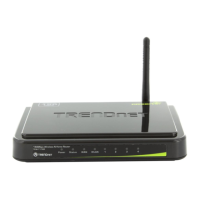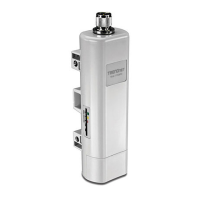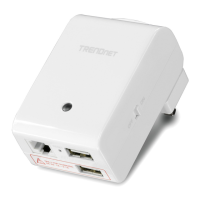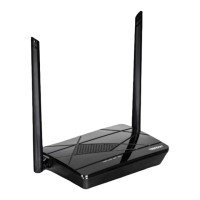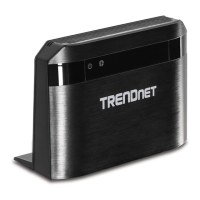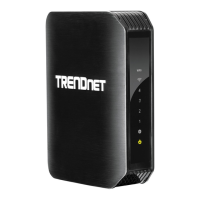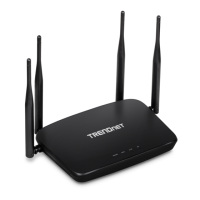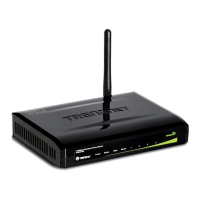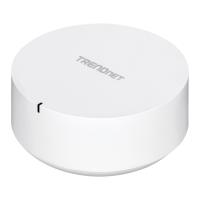© Copyright 2013 TRENDnet. All Rights Reserved.
TRENDnet User’s Guide
TEW-718BRM
44
Open a device on your network to the Internet
This router can provide access to devices on your local area network to the Internet
using the Virtual Server, Special Application, method (DMZ NOT recommended).
DMZ
Advanced > Firewall > DMZ
You may want to expose a specific computer or device on your network to the Internet
to allow anyone to access it. Your router includes the DMZ (Demilitarized Zone) feature
that makes all the ports and services available on the WAN/Internet side of the router
and forwards them to a single IP address (computer or network device) on your
network. The DMZ feature is an easy way of allowing access from the Internet however,
it is a very insecure technology and will open local area network to greater threats from
Internet attacks.
It is strongly recommended to use Virtual Server (also called port forwarding, see
“Virtual Server” on page 35
) to allow access to your computers or network devices from
the Internet.
1. Make sure to configure your computer or network device to use a static IP address or
you can use the DHCP reservation feature (see “Set up DHCP reservation” on page 53).
2. Log into your router management page (see “Access your router management page”
on page 35
).
3. Click on Advanced, click on Firewall, and click on DMZ.
4. Next to IP Address of DMZ Host, enter the IP address you assigned to the computer
or network device to expose to the Internet and check Enable.
5. To save changes, click Apply.
Note: If using ADSL WAN with multiple PVCs, click the DMZ Mode drop-down list to
select Multi Mode which will allow you which PVC to assign the DMZ Host.
Virtual Server
Advanced > NAT > Virtual Server
Virtual Server (also called port forwarding) allows you to define specific ports (used or
required by a specific application) and forward them to a single IP address (a computer
or device) on your network. Using this feature is more secure compared to using DMZ
(see “DMZ” on page 44
) in which DMZ forwards all ports instead of only specific ports
used by an application. An example would be forwarding a port to an network/IP
camera (typically on TRENDnet IP cameras use HTTP TCP port 80 for remote access web
requests) on your network for to allow remote access to it.
Since most ISPs constantly change your home IP address, to be able to access the Virtual
Server port(s) from the Internet it is recommended to setup Dynamic DNS service (See
DynDNS section).
1. Log into your router management page (see “Access your router management page”
on page 35
).
2. Click on Advanced, click on NAT, and click on Virtual Server.
To simplify configuration, there is a list of commonly used pre-defined virtual server
entries to modify by clicking the Well known services drop-down list, otherwise, you
can choose to manually add a new virtual server.

